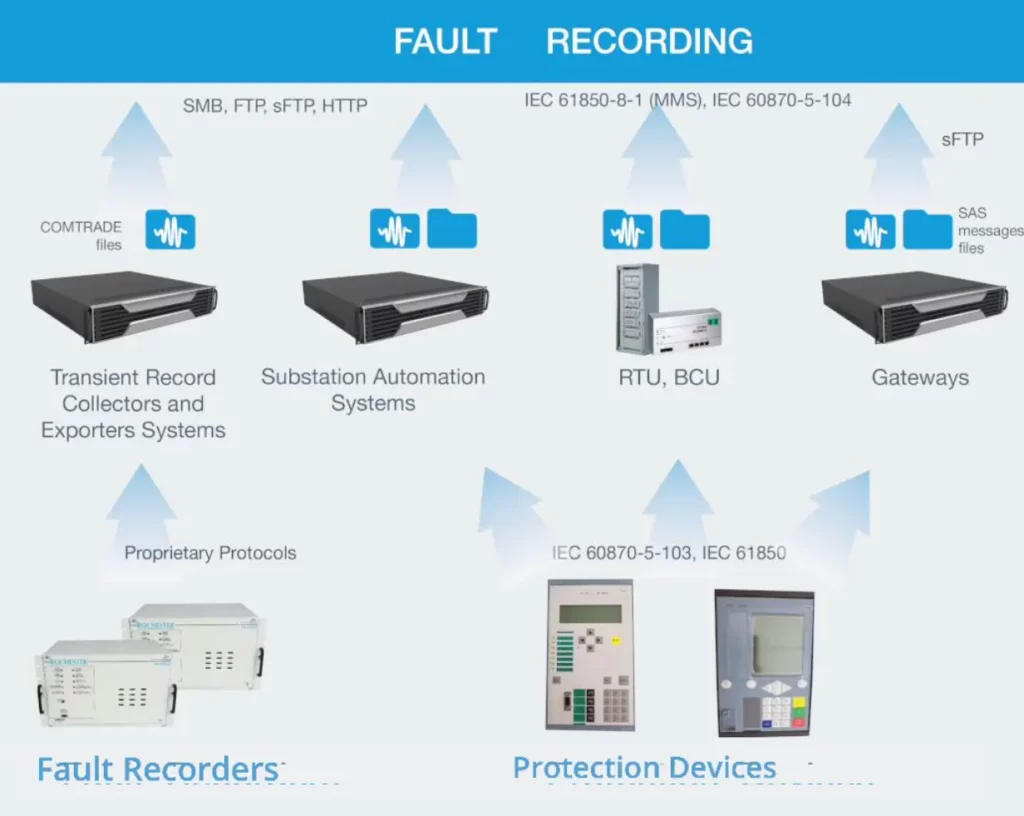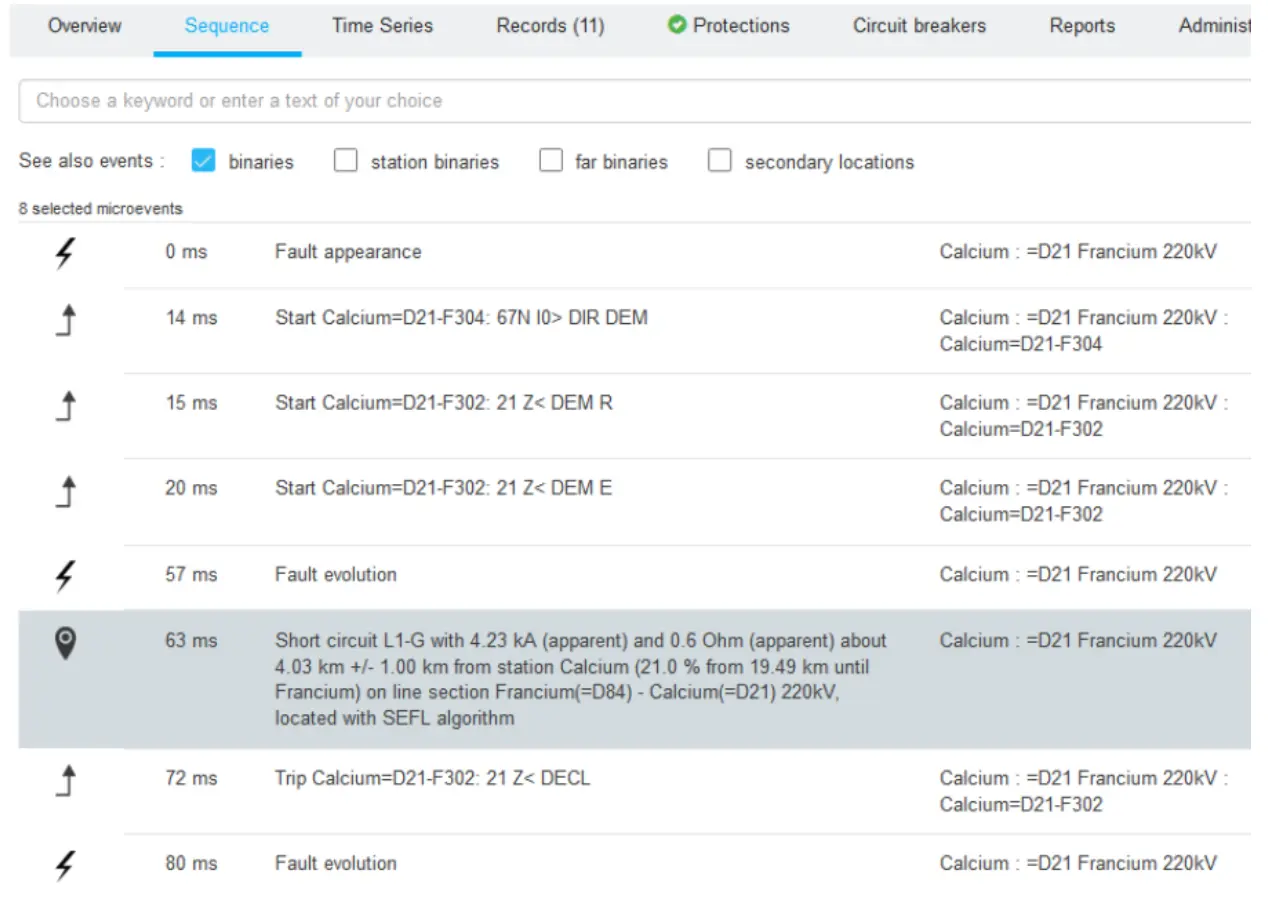IVPower AFA in a nutshell

IVPower AFA collects and analyzes automatically transients records and substation automation events – allowing operators and experts to quickly focus on essential facts and make appropriate decisions. The areas of application are:
- Quick assistance to control center for fault location and for decision taking after unsuccessful auto-reclosing, especially if several lines have been lost
- Comprehensive support of post-mortem fault analysis by automatic data collection, analysis of sequence of events, pinpointing abnormal patterns
- Contribution to conditional maintenance by providing operational statistics after each circuit breaker opening or closing, and checking correct protection operation, eventually allowing to postpone planned protection testing
Fast, accurate and reliable fault location

IVPower uses fault records in COMTRADE format and provides reactance-based fault location from one, two, or more terminals of power lines or cables.
Our fault location algorithm supports:
- Unlimited number of COMTRADE records
- Estimation of the tolerance
- Indication of closest tower and geographical position
- Automatic selection of voltage channels
- Compensation of mutual coupling
- Consideration of shunt reactors and parallel cable sections
As a result, most high-current short circuits can be located with an accuracy better than 5% of the line length. Independent calculation based on traveling-waves fault locators can be integrated, if such devices are installed.
Each fault location event is given a graphical representation of the fault on the line. This graphic displays the whole faulted line, with a red rectangular region that represents the possible fault location, taking into account the computed tolerance. Line feeders associated with recording devices are represented with flags. A tooltip indicates the station and the feeder labels:

Manual reclosing suggestion
To help the dispatcher in the situation where one or several lines have been tripped (no autoreclosing or unsuccessful autoreclosing) and when it is important to decide quickly which line should be manually reclosed first.
The practice/rules for manual reclosing vary from one utility to the other depending on the infrastructure, regulation and operational practice. But we also offer some additional functions to assist this decision taking:
- Indicate whether a lightning strike has (likely) hit the line, by correlation with meteorological data.
- Detect secondary arc in case of single-pole tripping, determine the time of secondary arc extinction and provide reclosing suggestion to the operator if it is reasonable to think that such an attempt has a fair chance of being successful.
- Analyze the voltage-current pattern of the fault, which in some cases reveals the possible fault cause (burning vegetation…). A pattern corresponding to a free burning arc in the air may characterize a transient fault.
Lightning strike correlation
IVPower provides additional insight about the faults: for example, it correlates faults on transmission lines with concurrent lightning strikes within the same area. The automatic conclusion provided by IVPower helps operator decision to reclose the line in case of unsuccessful automatic reclosing.
Sequence of fault events
The sequence of events is presented in a relative time scale the origin of which is the time of the fault inception.
The initial representation of the sequence of events only considers the information related to analog time series (voltages and currents). Some filters enable to also display the binary information (protection pick-ups and trips, etc…).
Furthermore, it is also possible to extend the area in order to see what happened at the same time on other lines.

